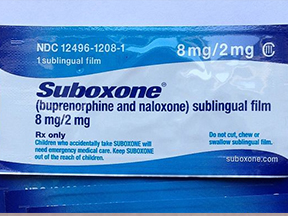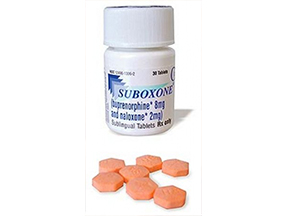What is Suboxone 2mg?
Suboxone 2mg is used to treat narcotic (opioid) dependence. Suboxone works by preventing withdrawal symptoms since the buprenorphine is actually a type of narcotic (opioid) itself.
INFORM YOUR DOCTOR OR PHARMACIST of all prescription and over-the-counter medicine that you are taking.
ADDITIONAL MONITORING OF YOUR DOSE OR CONDITION may be necessary if you are taking MAO inhibitors (e.g., furazolidone, linezolid, moclobemide, phenelzine, procarbazine, selegiline, isocarboxazid, tranylcypromine), medicines which decrease liver metabolism (inhibitors of cytochrome 3A4 enzymes such as itraconazole, ketoconazole, erythromycin, clarithromycin, ritonavir, indinavir, saquinavir), local anesthetics (e.g., bupivacaine), or sedative medicines (benzodiazepines such as diazepam, lorazepam).
SUBOXONE contains the active ingredients buprenorphine (as hydrochloride) and naloxone (as hydrochloride dihydrate). Buprenorphine acts as a substitute for opioids and it helps withdrawal from opioids over a period of time.
It contains two active ingredients: buprenorphine and naloxone. Buprenorphine is a partial opioid agonist, which helps reduce cravings and withdrawal symptoms without producing the full opioid effect, while naloxone is an opioid antagonist, included to deter misuse of the medication.
Key Information:
- How to Take: Suboxone 2 mg is usually taken sublingually (placed under the tongue and allowed to dissolve). It’s important not to chew, swallow, or suck on the tablet, as this can reduce its effectiveness.
- Common Uses:
- How It Works:
- Buprenorphine: This component helps alleviate withdrawal symptoms and cravings by partially activating opioid receptors in the brain, without providing the full “high” that drugs like heroin or prescription painkillers would.
- Naloxone: Included to discourage misuse of the medication. If someone tries to inject Suboxone, naloxone will block the effects of buprenorphine, potentially precipitating withdrawal symptoms.
- Side Effects: Common side effects include headache, nausea, vomiting, constipation, and sweating. Serious side effects can include respiratory depression, especially when taken with other central nervous system depressants like alcohol or benzodiazepines.
- Precautions:
- Interactions: Suboxone can interact with other medications, particularly those that depress the central nervous system (like sedatives, alcohol, or certain antidepressants), increasing the risk of dangerous side effects like respiratory depression.
Important Safety Tips:
- Dosage: Follow the prescribed dosage exactly. Taking more than prescribed can lead to overdose, especially when mixed with other substances.
- Withdrawal Management: Do not stop taking Suboxone abruptly, as this can lead to withdrawal symptoms.
- Storage: Store Suboxone in a secure place, out of reach of children or anyone who might misuse it.



Reviews
There are no reviews yet.